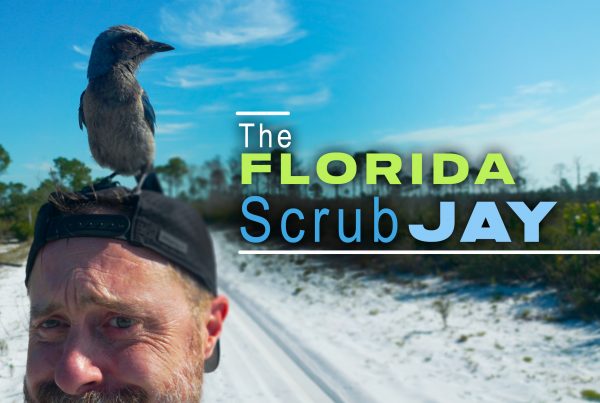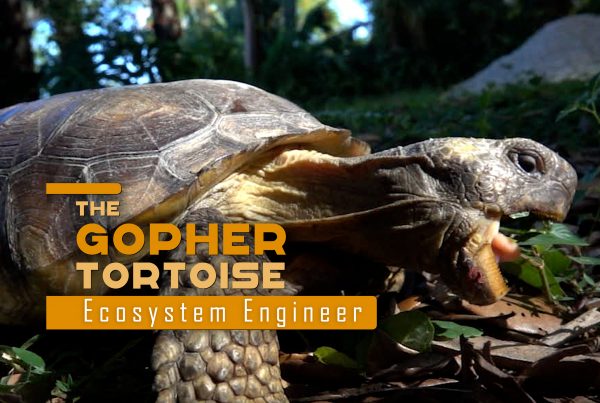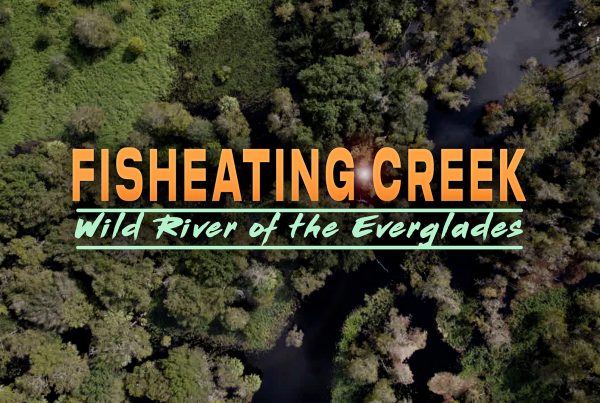In the Everglades, as in all ecosystems, every living thing is linked to gether to form a very complex community. A simple “food chain” is a good illustration to show just a few of these important relationships!
The Everglades, as we learned, is full of many different kinds of producers….sawgrass is another good example. Do a bit of research and see if you can find a primary consumer that eats sawgrass. Can you find a secondary consumer that eats that animal?
So now we understand that a lot of the food energy that an organism consumes is lost to the environment as heat energy, and a lot of the matter is pooped out as waste. That means only a small percentage of the matter and energy can pass on to the next level on the food chain. Predators at the top of the food chain need to eat lots and lots of smaller animals to get the energy and matter they need to survive. Do you think this means an ecosystem can usually support more top predators than primary, secondary or tertiary consumers?
The Food Chain
Today we’re in the Everglades. I’ve spent so much time out here exploring, it’s kind of like my second home. Here’s a fun fact for you: Everglades National Park was the first National Park established to protect an ecosystem. That right there should tell you how amazing this place is.
In the Everglades, as in all ecosystems, every living thing is linked together to form a very complex community. All of its plants and animals are connected in some way. In order to grow and survive, there are two things every organism needs: matter and energy. But where does this matter and energy come from, and how does it pass from one living thing to another?
This process…the flow of energy and matter through a community…is most easily understood by constructing a simple illustration which we call a “food chain.” Today we’ll create a typical Everglades food chain, but the story actually begins about 93 million miles from South Florida.
The sun is like an enormous nuclear reactor, radiating its rays across the solar system. Without the sun’s energy, there would be no life on Earth. Without the sun, there would be no plants…the first link in our chain of life.
Green plants, as well as some microorganisms, are able to harness the energy of the sun, converting it to food energy in the form of sugary compounds through the process of photosynthesis. We call these organisms “producers,” and this is where our food-chain begins.
The Everglades are full of producers: from sawgrass to saw palmettoes, Spanish moss and mangroves. One very important producer is a slimy goo called periphyton. Periphyton is complicated stuff, but it’s mostly a mixture of different types of algae. It can be found covering the limestone floor and many of the submerged plants of the Everglades.
The second link of our food chain is occupied by what we call a “primary consumer.” This is a “herbivore” or a “plant-eater.” For our chain we’ll use the mosquito larva. In its larval form, the mosquito is an aquatic herbivore, swimming around munching on organic matter. It loves periphyton.
The gambusia, on the other hand, loves mosquito larvae. This is why we also call him, “the mosquito fish.” We’ll stick him in the third link of our food chain. The gambusia is what we call a “secondary consumer.” Secondary consumers are animals that eat primary consumers. Because the gambusia mostly eats other animals, he can be classified as a carnivore.
The great blue heron is a fish eater. He has a dagger-like bill designed for spearing and snatching swimming prey. The heron is able to nab some pretty big fish, but the gambusia makes a nice appetizer. Because he mostly eats secondary consumers, this makes the great blue heron a “tertiary consumer,” and gives him a spot on our fourth link.
Now for the big guy. The American alligator is a formidable reptile. As a fully grown adult, he’s way at the top of the food chain. He’s what we call a “top predator,” also known as an “apex predator.” For the gator, wading birds are a normal part of its diet, and an unobservant great blue heron would be gourmet dining. This guy is aware of the danger…time to go sunbathe elsewhere!
When we put together a food-chain, we notice that there are usually no more than 4 or 5 links from the producer to the top predator. There’s a good reason for this. When an organism eats another organism, it uses up a lot of the food energy that is taken in, rather than passing it all up to the next link on the chain. Much of that energy is used in digestion and other metabolic processes as the organism grows and passes out into the environment as heat energy.
At the same time, much of the matter is excreted as waste and is incorporated into the soil. In fact, the rule of thumb is that only about 10 percent of the energy consumed by an organism passes on to the next level. This is called the “10 Percent Rule.” So basically, there can’t be too many links in the chain, or the predators at the top of the food chain won’t be able to get enough of the energy they need to survive and grow.
And there you have it. Now we understand how a food chain is constructed. Another useful tool in understanding the flow of matter and energy through an ecosystem is a food pyramid. And of course, nature is complex. Ecosystems are composed of many food-chains, which often crisscross and overlap to form what is called a food-web. Today we’re out of time, but we’ve got you covered. Check out our food pyramid and food web videos to learn more!




